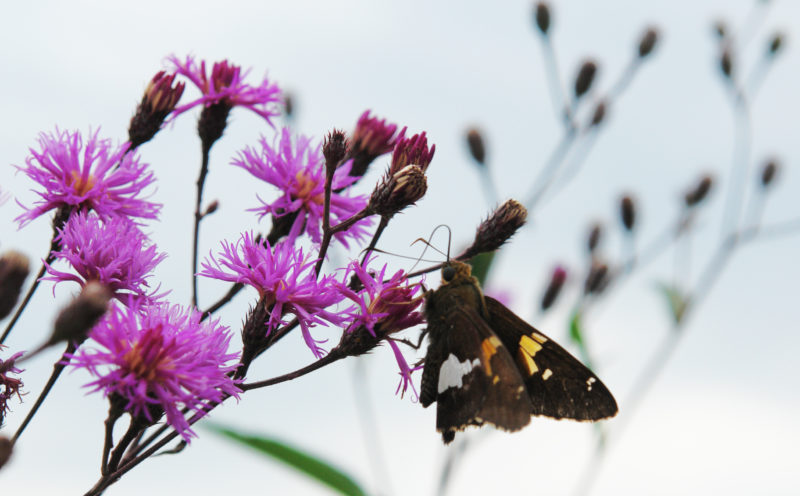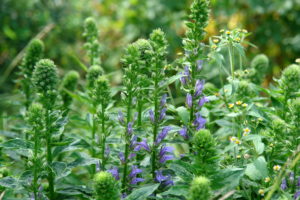
Going Native
With the increased popularity and demand for native plants in recent years, more and more growers are placing a greater emphasis on them. Many perennial programs already contain some natives, but now with the renewed interest in protecting pollinators and using drought resistant plants (along with numerous other reasons), native perennials are continuing to be a growth category for many greenhouses and nurseries.
As you’re probably already aware there are numerous definitions and viewpoints out there regarding what native plants are and how they should be used. There are some individuals (purists) who adhere to the strictest meaning of native plants and will not consider any plant that originated in different geographic locations or which have been cross bred in any way, shape or form. While the majority of people do not have such rigid expectations and are generally more open to looking at natives from a broader and more relaxed perspective.
Regardless of your personal viewpoints on what defines native plants, you’ll likely have opportunities to satisfy the needs of both types of customers.
WHAT IT MEANS TO BE NATIVE
What are native plants and what roles do they offer in the landscape? As already mentioned, there are numerous variations of how a native plant is defined. Perhaps the most simple and relevant definition is “a native plant is one that occurs naturally in the place where it evolved.” This definition implies that the native plant grows naturally in a specific region or locality without direct or indirect human intervention.
In natural landscapes, native plant species offer great benefits to the environment and the local ecosystem. Native perennials contribute to sustainable habitats through symbiotic relationships with other native plants and wildlife. Native species have mutually beneficial relationships and are essential to the survival of pollinators and insects, birds and other wildlife populations.
Native plants are most beneficial to the environment or natural habitats when they are planted in places that match their growing requirements and the sites they were originally growing on. Matching a native plant to its preferred or natural growing conditions such as its soil type, moisture preferences and even its weather conditions will aid in the successful establishment of a native and sustainable landscape.
Once established, native perennials are better suited to the growing conditions and will usually require less care than plants from other locations. Native plants tend to struggle less and are better suited for surviving seasonal swings in temperature, periods of overly wet or dry conditions, and bouts of high humidity better than many of the cultivated varieties and hybrids on the market.
When native perennials are placed into the right location they will thrive, require less care and supplemental irrigation, help to reduce rain water runoff, maintain healthy soils and support natural wildlife better than other types of plants. With the expanding population and urban encroachment, it’s very important that we get serious about natural landscapes and preserving native habitats. Your customers are aware of this and many of them will be looking for native perennials to help them take steps towards a sustainable landscape.
ARE WE STRETCHING THE DEFINITION?
As entrepreneurs, we often stretch the definitions a little to allow for larger marketing and sales opportunities. For example, plants are commonly marketed as being native to the United States when they may actually only be native in a significantly smaller geographic region within the United States. Are we misrepresenting the meaning of “native” and misleading consumers? Perhaps when thinking of native plants, you should be thinking about what grows in your local ecosystem rather than what could be grown in a broader/national region.
Plant breeding and selecting plants with certain attributes such as larger, longer lasting blooms and listing them as being “native” is another way our industry often stretches the boundaries between cultivated and native plant species. Many named cultivars and hybrids are marketed as natives or nativars, but are these plants really native or native to the regions they’re being promoted in? I think you’d be surprised how few plants in the marketplace are truly native in the regions where they are marketed.
Regardless, our industry, landscapers and gardeners have all enthusiastically embraced all things native. There seems to be no firm boundaries or limitations as what native perennials are or how they are used. Whether native perennials are being used by purists who adhere to the strictest native definitions or consumers who simply receive gratification for utilizing native plants in their landscapes, there truly are plenty of opportunities to grow and sell native plants.
Coreopsis verticillata (North Creek Nurseries)
Amsonia hubrichtii (Walters Gardens
Lobelia siphilitica (North Creek Nurseries
Rudbeckia fulgida (North Creek Nurseries)
SELLING NATIVE PLANTS
If your goal or the goal of your customers is to establish natural native landscapes, then it will be important to distinguish which plants are native to the specific geographic area the plants are being planted into. Keep in mind that a plant native to the United States doesn’t necessarily mean that it’s native to the area it’s being utilized. It’s also helpful to understand the geographic origin and genetic diversity of the plant source; when possible, choose a plant source which is from an area that matches the growing area of the intended site as closely as possible.
For most of our customers, the definition of native is much less rigid than what the purist believes. As a result, the boundaries for native plants are much broader and will allow for a significantly wider selection of perennial species and cultivars to be marketed and utilized as native plants.
I’ve included a listing of several native plants for your consideration (Table 1). This is just a sampling of what’s currently being marketed, there are many more plant species than the ones I’ve provided. Also, not to over emphasize this point, but keep in mind that the plants in this listing are native to somewhere in the United States and they’re not native in all locations.
In the end, there’s no right or wrong way to go about producing and selling native perennials. Be prepared to educate your customers about the nuances of native plants and everything they have to offer as well as some of the potential limitations of these plants. Take each customer into consideration and do your best to sell them whatever native plants best meets their objectives. Growing and selling natives doesn’t have to be intimidating.






 Video Library
Video Library 




















